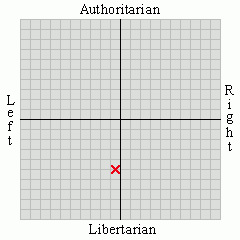In 1964 LBJ dropped the 91% top marginal tax rate to 77%, lowering it yet again to 70% just a year later. That didn’t hold and by the end of his time in office the rate was back up to 77%. Nixon managed to get it back down to 70% in his second year, which is where it remained until 1980 when Reagan, in cooperation with House Majority Leader Tip O’Neil, chopped the top tax rate to 50%. By the time Reagan left office he had whittled the top rate to 28%, the lowest rate since the Hoover administration and the Great Depression.
Even Regan’s chosen successor recognized that this country could not be sustained with revenues so low, and in spite of his now infamous “Read my lips” pledge, by his second year in office Bush the Elder raised the rate just a smidge to 31%, and again in his last year in office to 39.60%. Six years later, in the midst of a smoking economy, Clinton dropped the rate a point.
Bush the Shrub came to office in 2000 and barely over a year later the homeland was attacked by terrorists. Within two years we would find ourselves fighting wars on two fronts. These wars have proved very expensive, both in terms of life and property, and in human life and suffering. How did Bush pay for these wars and the subsequent costs of care for thousands of wounded soldiers and sailors? He further cut the tax rate, reducing revenues, increasing debt and sending Americans hat in hand to China for loans. Bush created the first non-FED related recession in history.
Much as Obama has inherited the Bush recession, Reagan inherited a fledgling recession when he came to office in 1980, albeit of a far different origin. Reagan advisors at the time included Treasury Secretary Donald Reagan, Princeton educated former Nixon Assistant Treasury Secretary Murray Weidenbaum, and the UC Berkley educated Bill Niskanen, former OMB Director and a staunch Nixon critic. Niskanen had previously worked in the Kennedy administration as one of Defense Secretary Robert McNamara’s Pentagon "whiz kids" who used statistical analysis to examine Defense Department operations.
It was advisors such as these who directed the policy that in just two short years turned Reagan’s inherited recession around. How did they do it you ask? They advised Reagan that government was the solution. Upon the advice of some very bright economists, Reagan initiated programs that encouraged government to hire workers, and used tax incentives to encourage American business to do the same. Ronnie spent his way out of the recession… and it worked.
President Obama knows this and understands that shrinking government right now is exactly the wrong this to do. This is the point he was trying to make when the now infamous “private sector is doing fine” gaffe stole the show. Overlook those few words and listen to the rest of the response and you will find that Mr. Obama is attempting to promote the same actions today as Reagan used in 1981-82... but Republicans in Congress control the purse strings and so long as the ultimate Republican goal remains the making of Obama as a one-term President, it will never happen. It seems they would rather see America brought to her knees than lose another election.
The chart below well illustrates the differences between 1981 and today.
###









1 Comments:
As long as the partisanship on BOTH sides continues, we are doomed to failure regardless who sits in the big chair...
Post a Comment